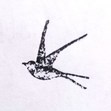Scientific Limitations of the Boiling Seas
The biggest issue I’ve encountered when building the world of this third book in the Boiling Seas is that almost nobody can tell me what boiling water looks like from the inside.
You’d think that in this age of crazy cameras and resistant materials that somebody would have thought to take a video inside a kettle – but, to date, I have only found a handful of examples. And while they do give me some information, it’s not enough. I’ve had to – shudder – make stuff up. In a fantasy book, of all places. Because The Owl and the Labyrinth requires my protagonists to just be hanging out underneath the Boiling Seas – so I need this description to be watertight in more ways than one.
And no, looking into a glass kettle is insufficient, damnit – I need to see a view from actually inside that bubbling, boiling water.
This was the first example I found, and while it does give me information, there’s a bloody egg in the way. What I do get from this, apart from notions of how my sailors need to cook their breakfast, is an insight into how those bubbles pool and move. It’s not quite like inside something carbonated, where bubbles cling to introduced objects – they’re leaping off that spoon as fast as they can even when it’s not moving. Boiling water is a dynamic place. (Good: that’s how I’d been writing it.)
From Make Sushi 1. They… mostly make sushi.There’s also this example from a hot spring in Sri Lanka – but a hot spring is not a boiling spring, and though it showcases the constant streams of bubbles very nicely it’s just not hot enough for what I need. This cameraperson stuck their hand into the water with no ill effects – if they did the same on the Boiling Seas they’d be on their way to hospital in seconds. But again, we see these rising bubbles, this time in great columns coming from the deeper heat source somewhere down there.
From This Generation.Hot springs are probably the closest real-world equivalent to the Boiling Seas that exist in the real world: water being heated by magma or other deep geothermal stuff, full of minerals and occasionally very much unsuited to casual swimming. But because rocks, they seldom appear to be convenient deep shafts of water – while there is footage from inside some of the geysers at Yellowstone it’s largely of wet rocks rather than an actual view of inside the water. The geysers we have easy access to are on land, and so decidedly less damp than something at the bottom of an entire boiling ocean. No pockets of ‘dry’ space down there – it’s all water, all bubbling, all the time.
But if relatively little magma can produce effects like that… how hot is the ocean floor of the Boiling Seas? How tortured is the surface of this planet? It’s a good thing most people live on islands because those plate tectonics are going to be serious. I wonder how it’ll affect people even on the mainlands, to have the seafloor in such constant flux, unveiling new chasms down to the searing magma of the planetary mantle. I gave Tal, Max and Lily a glimpse of that already, in Nightingale’s Sword. But that was under the land. Under the sea? That’s another sight entirely.
So while resources are limited I have some picture of what the underwater world of the Boiling Seas should look like. Apart from all the metal fish, of course. But the actual water I have some picture of… but not enough. Research for fantasy stories can inevitably only get one so far before you have to make stuff up – that’s the whole point of the genre – but I was surprised how little real-world info I was able to find to start things off. That’s the author’s life, though, I suppose.
If anyone reading this happens to have a kettle, a heat-resistant and waterproof camera, and spare time on their hands, I’d love to hear from you. Bit of a specific request, but you never know, eh?



